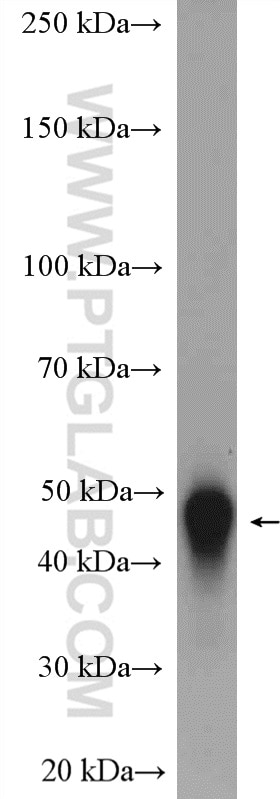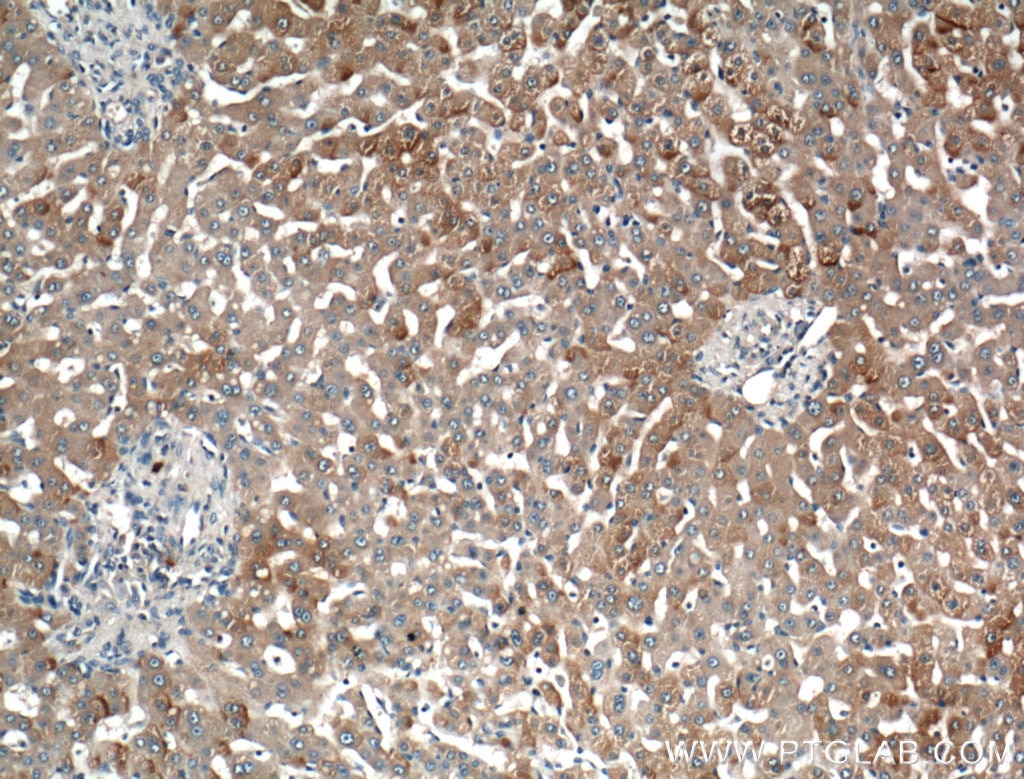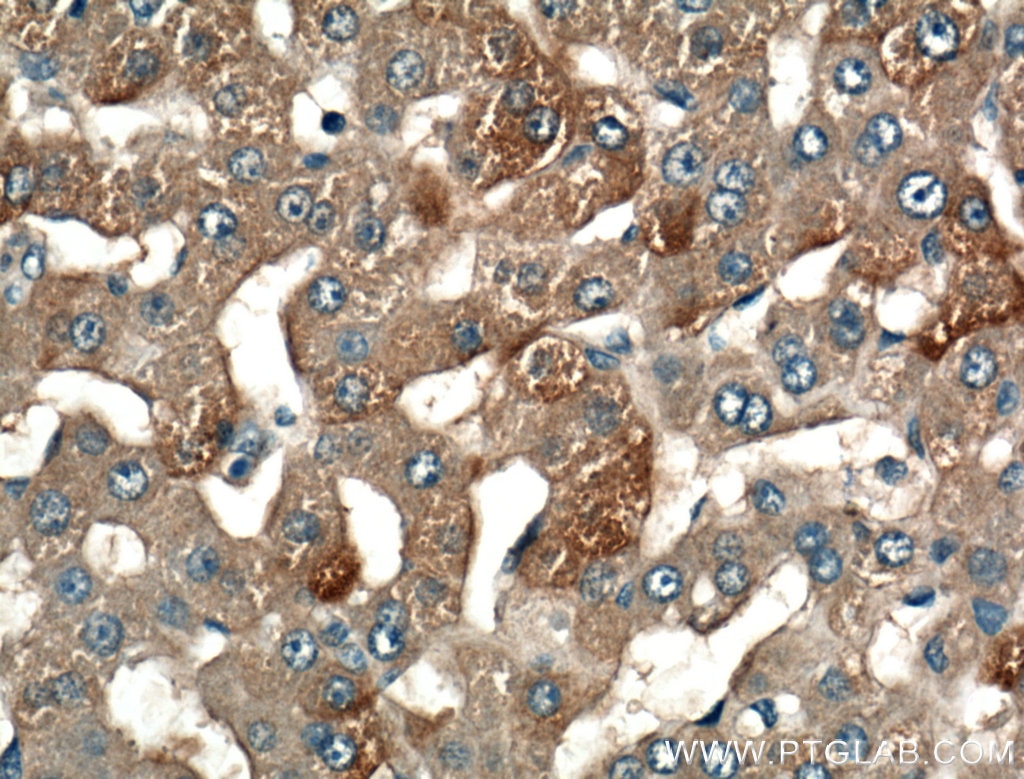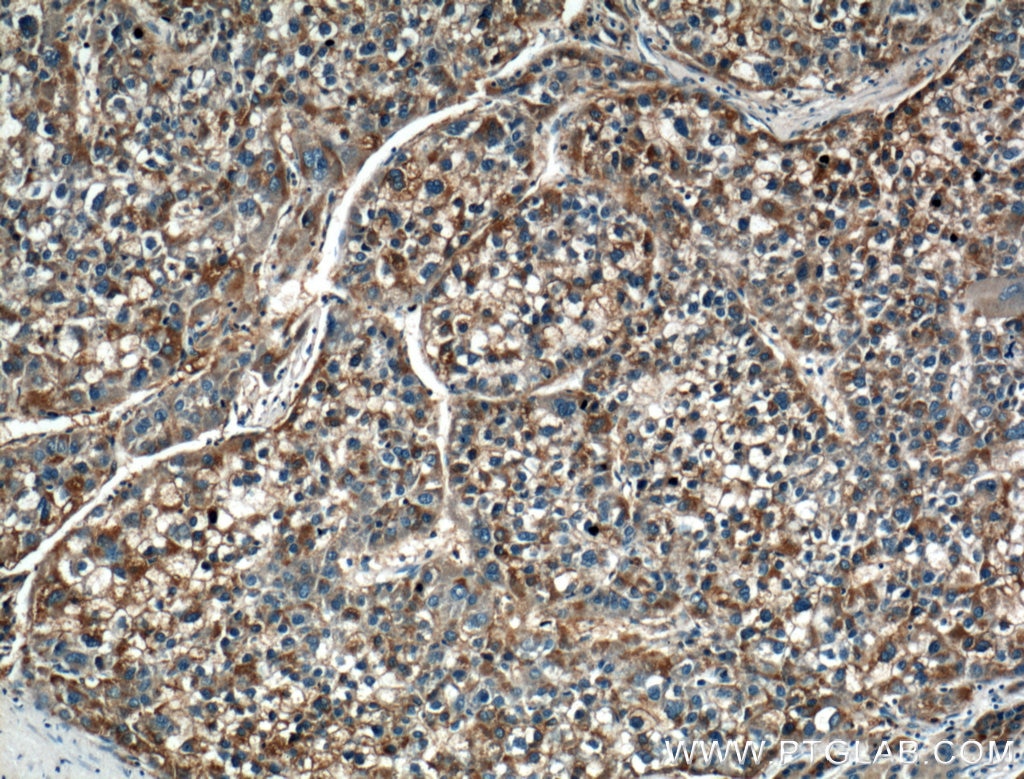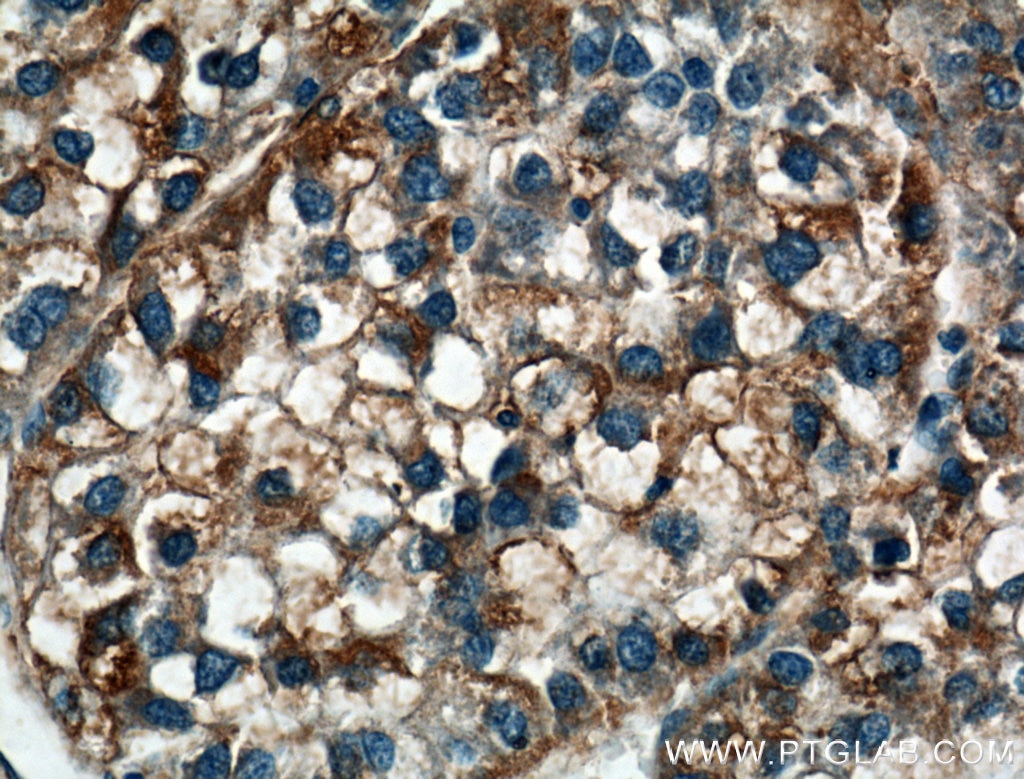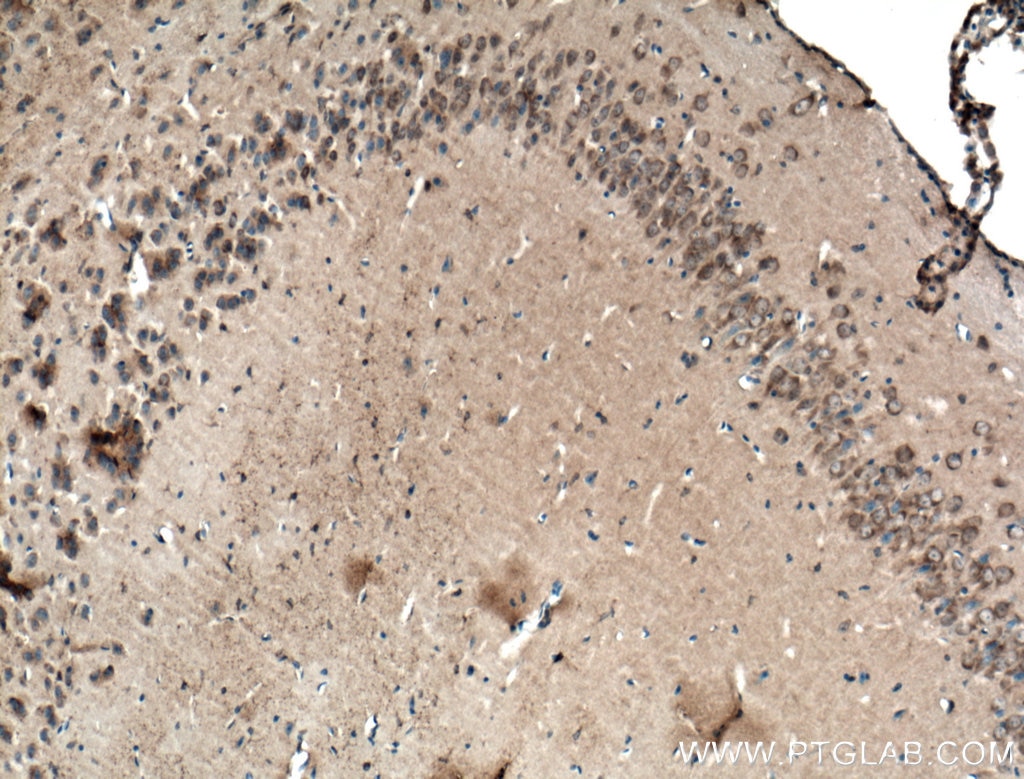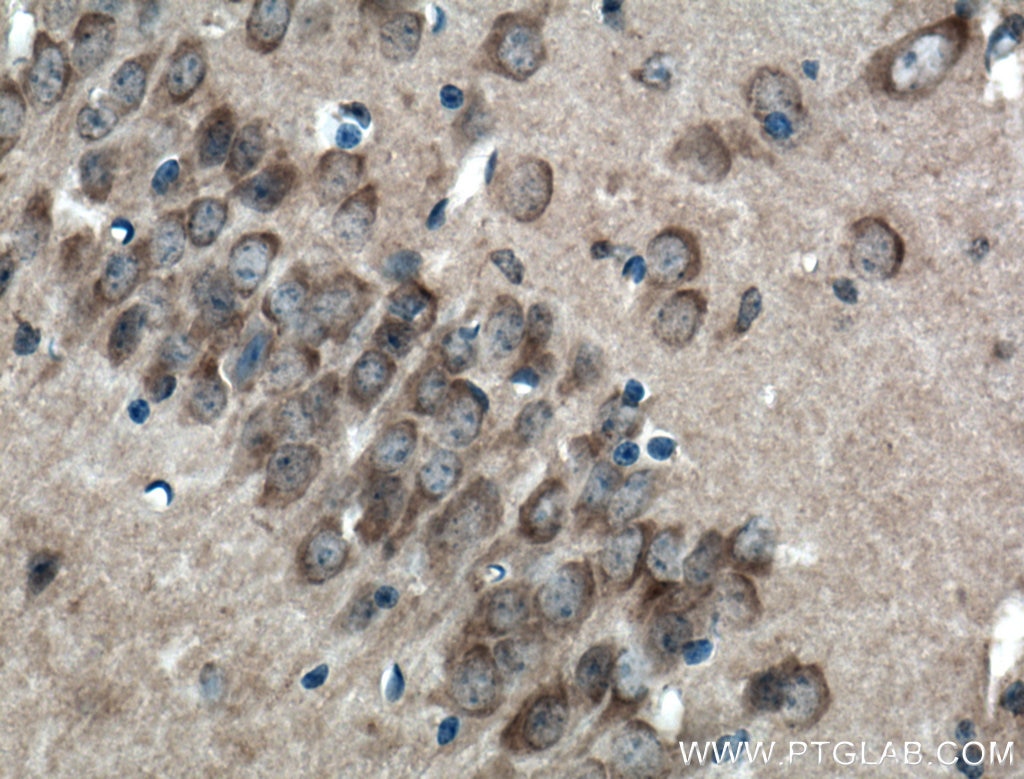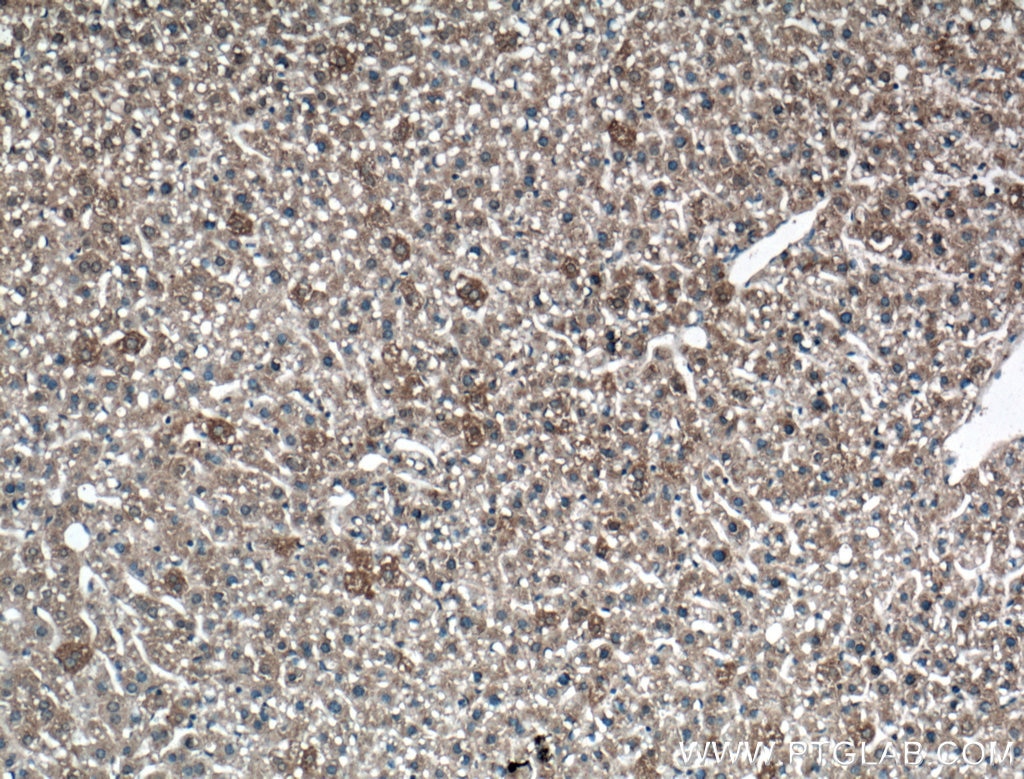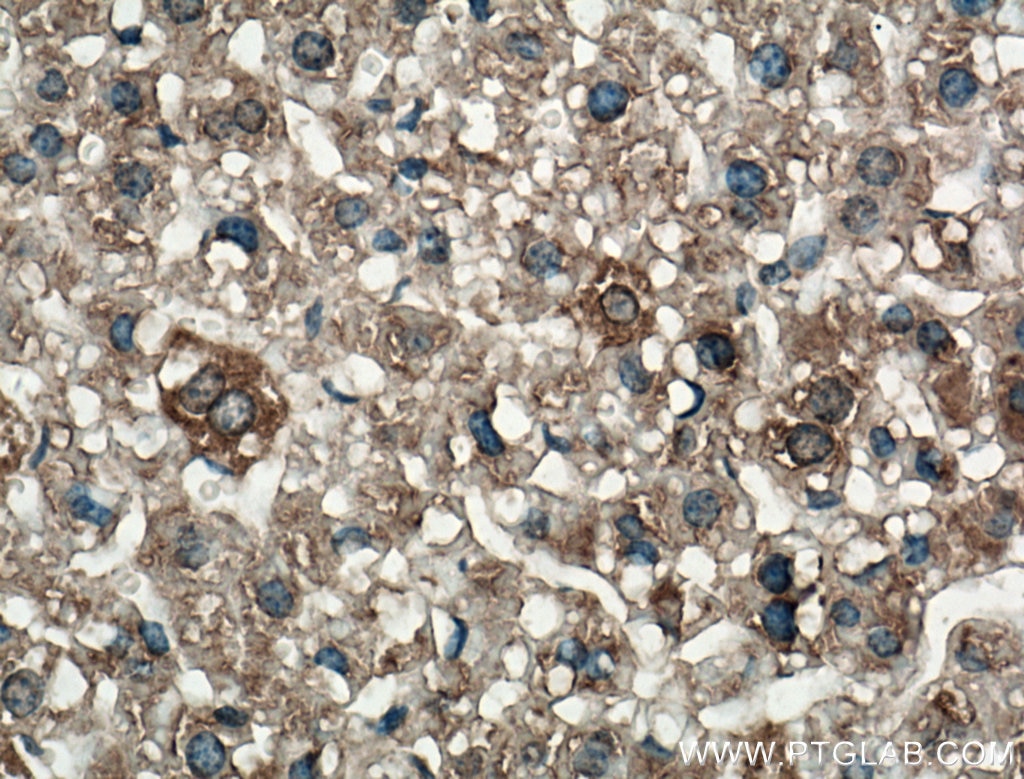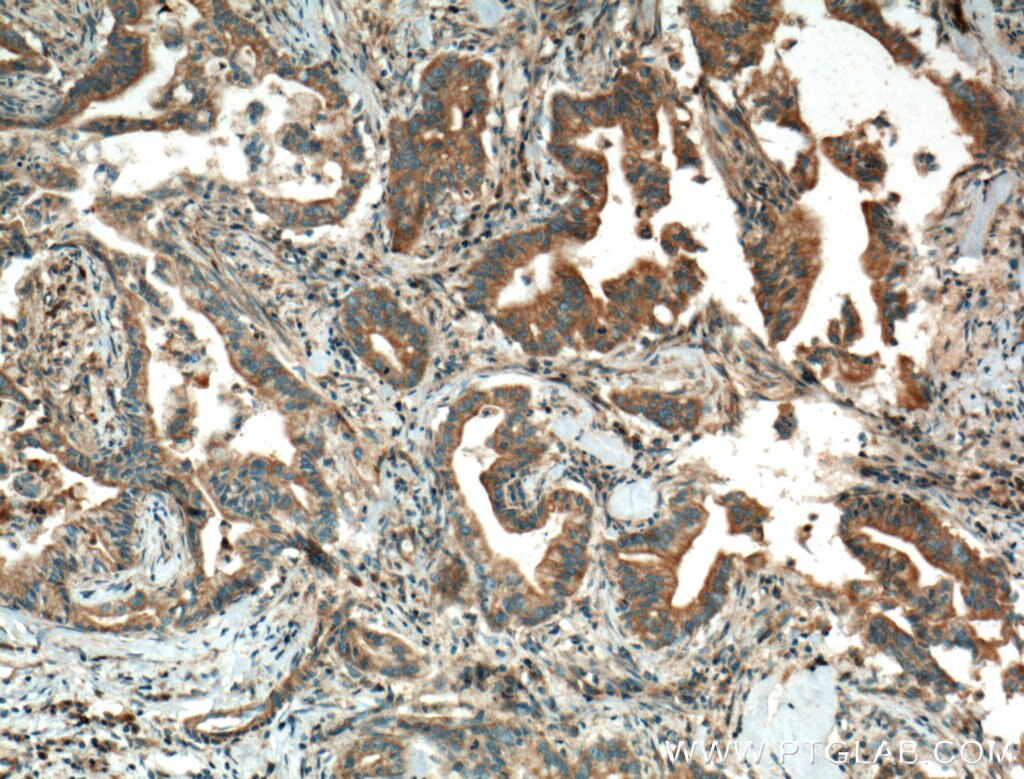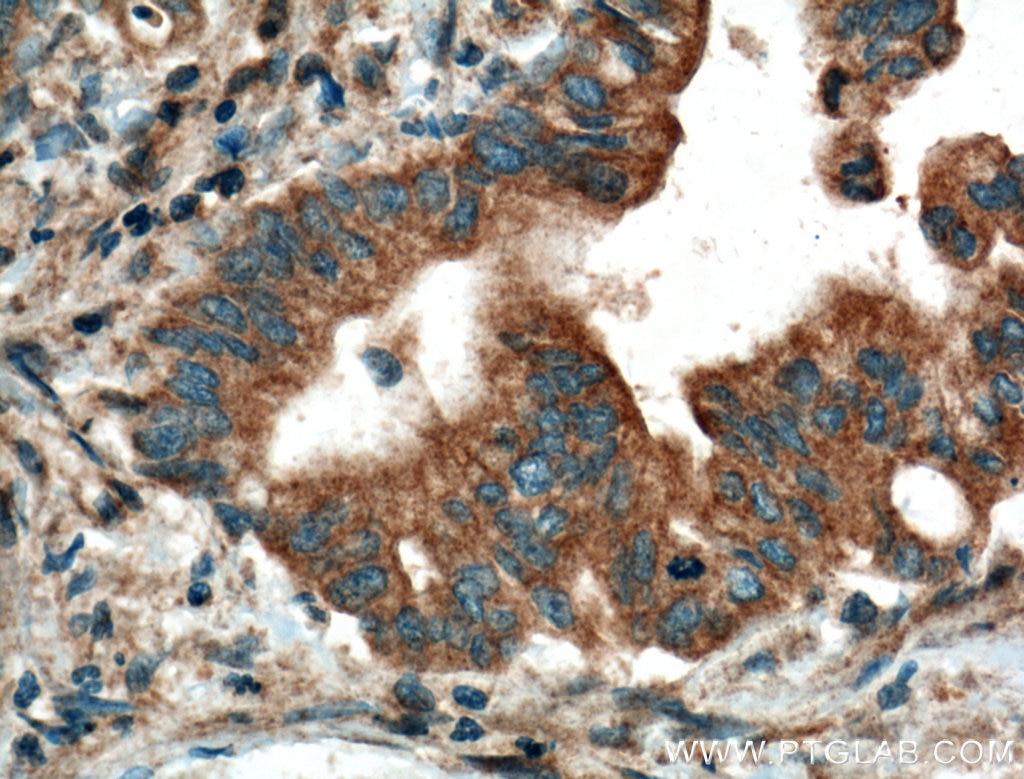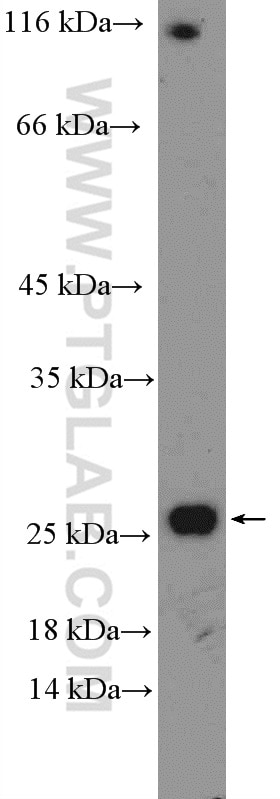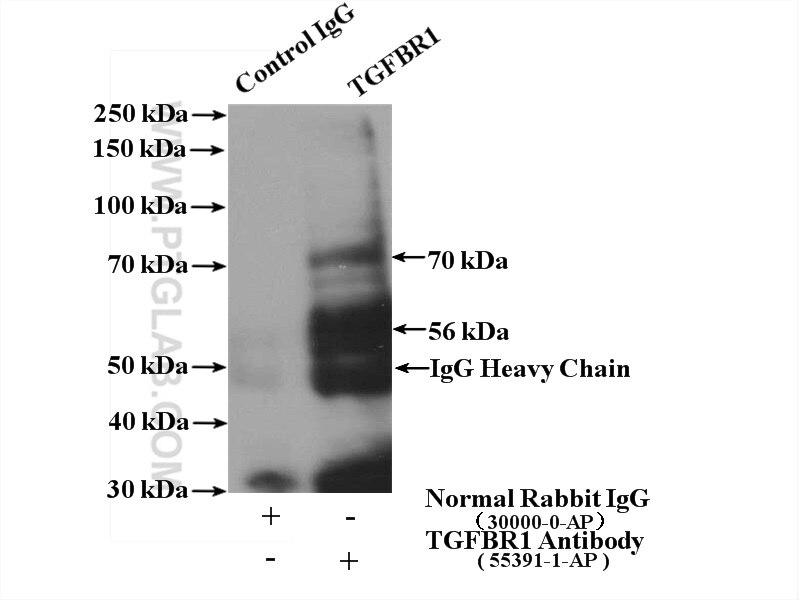- Phare
- Validé par KD/KO
Anticorps Polyclonal de lapin anti-LRG1
LRG1 Polyclonal Antibody for WB, IHC, ELISA
Hôte / Isotype
Lapin / IgG
Réactivité testée
Humain, souris et plus (1)
Applications
WB, IHC, ELISA, IF
Conjugaison
Non conjugué
N° de cat : 13224-1-AP
Synonymes
Galerie de données de validation
Applications testées
| Résultats positifs en WB | plasma humain, |
| Résultats positifs en IHC | tissu hépatique humain, tissu cérébral de souris, tissu de cancer du foie humain, tissu de cancer du pancréas humain, tissu hépatique de souris il est suggéré de démasquer l'antigène avec un tampon de TE buffer pH 9.0; (*) À défaut, 'le démasquage de l'antigène peut être 'effectué avec un tampon citrate pH 6,0. |
Dilution recommandée
| Application | Dilution |
|---|---|
| Western Blot (WB) | WB : 1:500-1:2000 |
| Immunohistochimie (IHC) | IHC : 1:50-1:500 |
| It is recommended that this reagent should be titrated in each testing system to obtain optimal results. | |
| Sample-dependent, check data in validation data gallery | |
Applications publiées
| KD/KO | See 4 publications below |
| WB | See 13 publications below |
| IHC | See 12 publications below |
| IF | See 9 publications below |
| FC | See 1 publications below |
Informations sur le produit
13224-1-AP cible LRG1 dans les applications de WB, IHC, ELISA, IF et montre une réactivité avec des échantillons Humain, souris
| Réactivité | Humain, souris |
| Réactivité citée | rat, Humain, souris |
| Hôte / Isotype | Lapin / IgG |
| Clonalité | Polyclonal |
| Type | Anticorps |
| Immunogène | LRG1 Protéine recombinante Ag3964 |
| Nom complet | leucine-rich alpha-2-glycoprotein 1 |
| Masse moléculaire calculée | 347 aa, 38 kDa |
| Poids moléculaire observé | 45 kDa |
| Numéro d’acquisition GenBank | BC034389 |
| Symbole du gène | LRG1 |
| Identification du gène (NCBI) | 116844 |
| Conjugaison | Non conjugué |
| Forme | Liquide |
| Méthode de purification | Purification par affinité contre l'antigène |
| Tampon de stockage | PBS avec azoture de sodium à 0,02 % et glycérol à 50 % pH 7,3 |
| Conditions de stockage | Stocker à -20°C. Stable pendant un an après l'expédition. L'aliquotage n'est pas nécessaire pour le stockage à -20oC Les 20ul contiennent 0,1% de BSA. |
Informations générales
LRG1, also known as LRG, is a member of the leucine-rich repeat (LRR) family of proteins, containing eight LRR (leucine-rich) repeats and one LRRCT domain. The gene of LRG1 maps to chromosome 19p13.3, and encodes a 347-amino acid protein with a predicted unmodified molecular weight of 38 kD. The mature form of LRG1 is a secreted glycoprotein which has 312 amino acids and an experimentally determined molecular mass of 45 kD. The LRR family of proteins, including LRG1, have been shown to be involved in protein-protein interaction, signal transduction, and cell adhesion and development. LRG1 is expressed during granulocyte differentiation. Levels of the LRG protein are markedly elevated in acute appendicitis and therefore could be used as a diagnostic aid.
Protocole
| Product Specific Protocols | |
|---|---|
| WB protocol for LRG1 antibody 13224-1-AP | Download protocol |
| IHC protocol for LRG1 antibody 13224-1-AP | Download protocol |
| Standard Protocols | |
|---|---|
| Click here to view our Standard Protocols |
Publications
| Species | Application | Title |
|---|---|---|
Small Methods Highly Sensitive Exosome Detection for Early Diagnosis of Pancreatic Cancer Using Immunoassay Based on Hierarchical Surface-Enhanced Raman Scattering Substrate. | ||
Kidney Int Gene expression profiles of glomerular endothelial cells support their role in the glomerulopathy of diabetic mice. | ||
Diabetes A Multifunctional Role of Leucine-Rich α-2-Glycoprotein 1 in Cutaneous Wound Healing Under Normal and Diabetic Conditions.
| ||
Oncotarget Leucine-rich α-2-glycoprotein promotes TGFβ1-mediated growth suppression in the Lewis lung carcinoma cell lines. | ||
Cancers (Basel) LRG1 Promotes Metastatic Dissemination of Melanoma through Regulating EGFR/STAT3 Signalling. | ||
